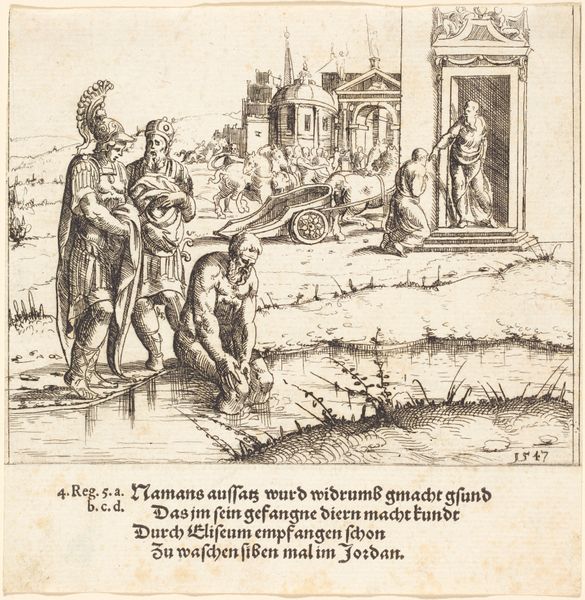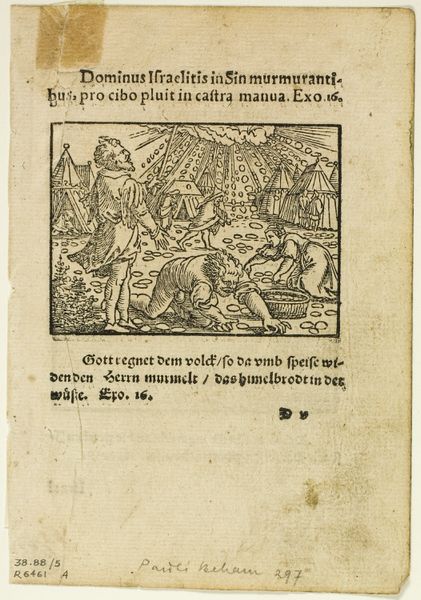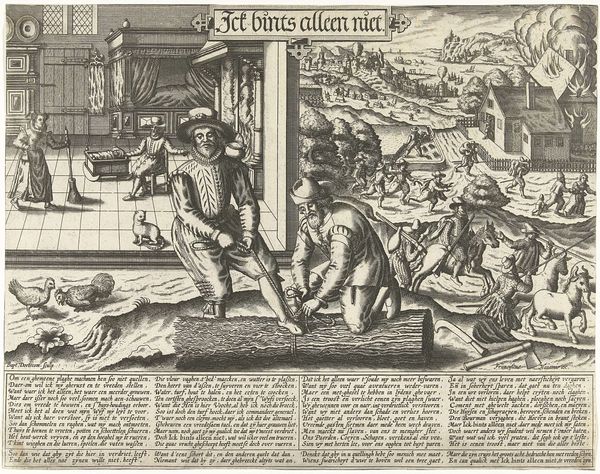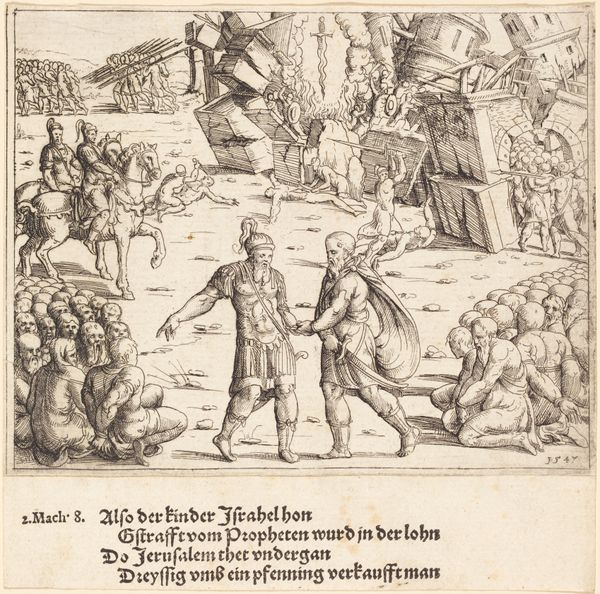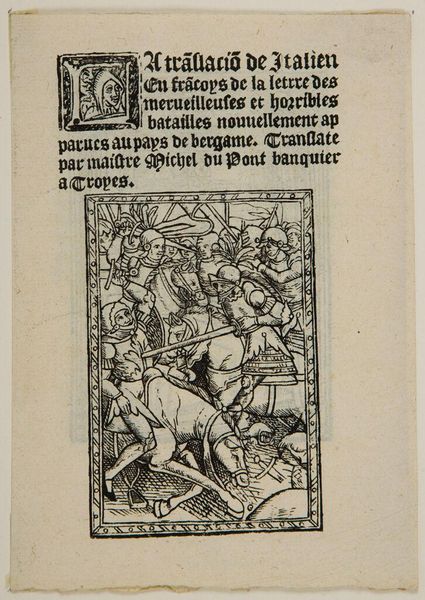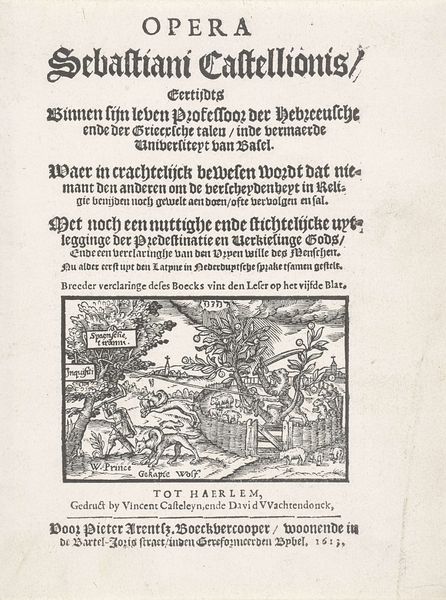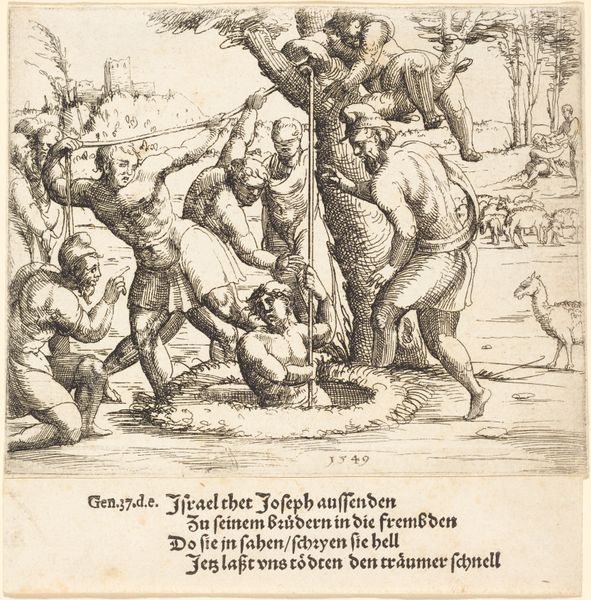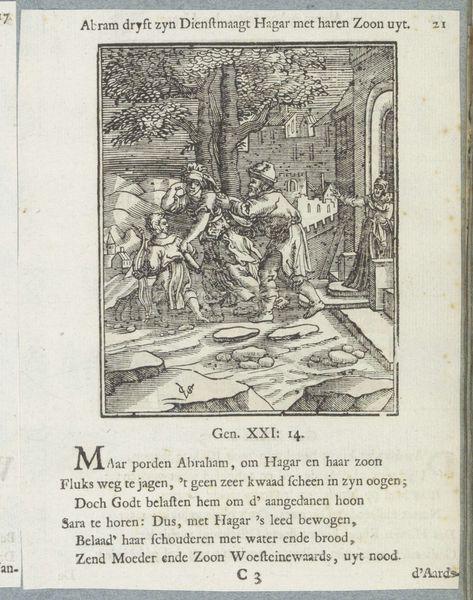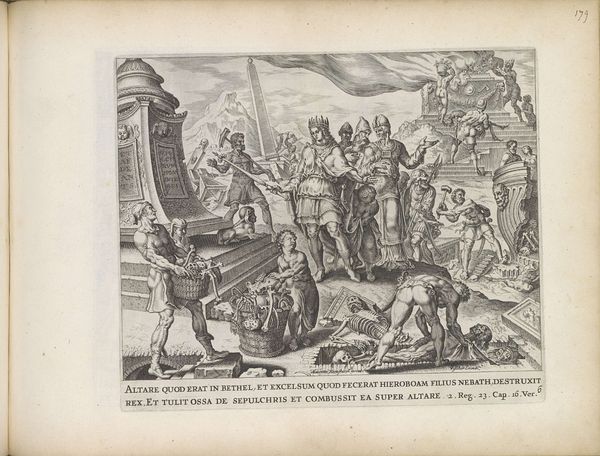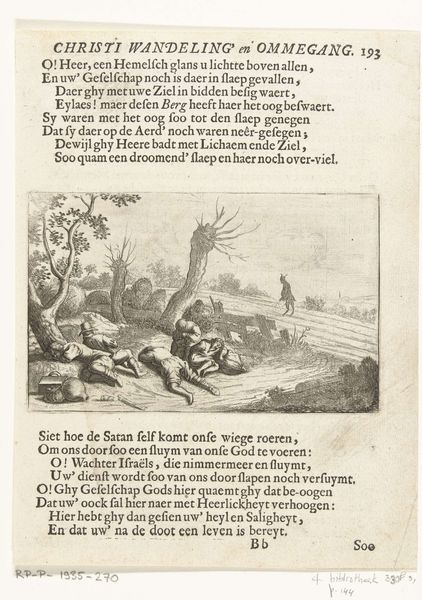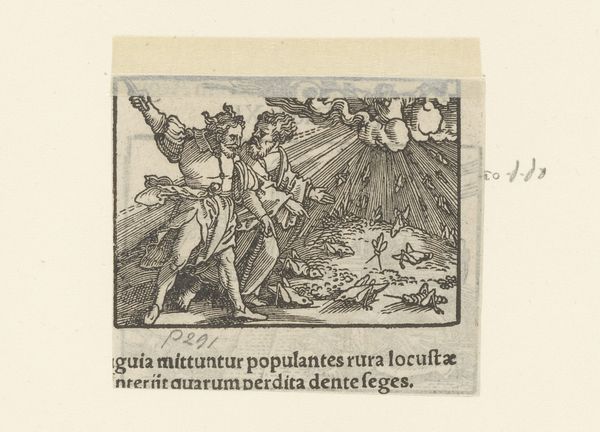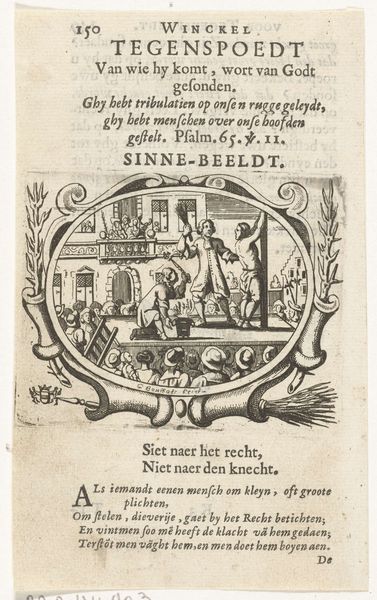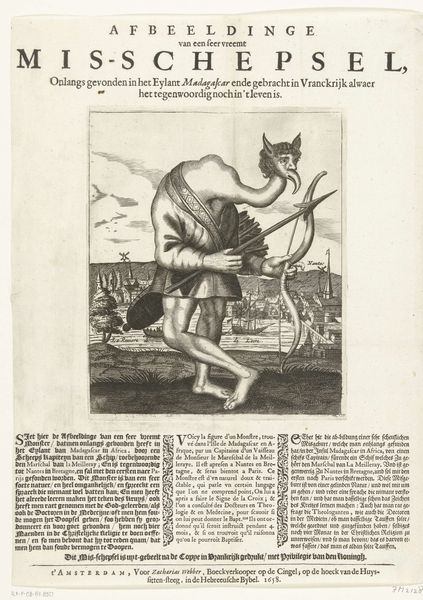
Titelprent van het pamflet: Iamertiens Oft Aventuersche berouw Clacht gedaen aen den Ouwe trouwe Geus, 1619 1619
0:00
0:00
Dimensions: height 181 mm, width 150 mm
Copyright: Rijks Museum: Open Domain
Curator: This engraving, created in 1619, is the title page of a pamphlet titled, "Iamertiens Oft Aventuersche berouw Clacht gedaen aen den Ouwe trouwe Geus." It comes to us from an anonymous artist, and you can see it in our collection here at the Rijksmuseum. Editor: What immediately strikes me is the dense symbolism and the dramatic arrangement of figures. The composition leads my eye around a central wheel, giving the whole piece a very dynamic, almost frantic energy. Curator: Indeed. The engraving functions as an allegorical representation of the political turmoil of the time. This pamphlet, you see, reflects the Remonstrant's grief over what they viewed as the injustices perpetrated against them by Prince Maurits and the Contra-Remonstrants. Editor: The allegorical figures become more evident when we consider the interplay of line and form. Take the female figure on the left, poised above turbulent water; then our eyes are drawn to the wheel, with figures being both raised and crushed. There's an intricate dance between positive and negative space, intensifying the emotional impact. Curator: Absolutely. Note the "Ouwe Trouwe Geus," armed and atop Fortune's Wheel—likely depicting Prince Maurits, maintaining his power by suppressing the Remonstrants represented clinging precariously. Editor: That detail on Fortune's Wheel… its craftsmanship truly enlivens it, doesn't it? There is very meticulous rendering there. Curator: It served a very particular purpose at the time. Pamphlets such as this would become vital to the dissemination of ideas, even shaping public opinion on complex religious conflicts. Editor: Considering the print’s age and original purpose, the sharp detail preserved shows that it’s in surprisingly good condition. This almost enables us to touch the artist’s state of mind. Curator: Yes, looking closely allows us to witness a snapshot of a particularly turbulent period in Dutch history, rendered tangible through the power of art. Editor: And, for me, even more, to realize how potent are graphic compositions in transmitting emotions that continue to resonate across time.
Comments
No comments
Be the first to comment and join the conversation on the ultimate creative platform.
